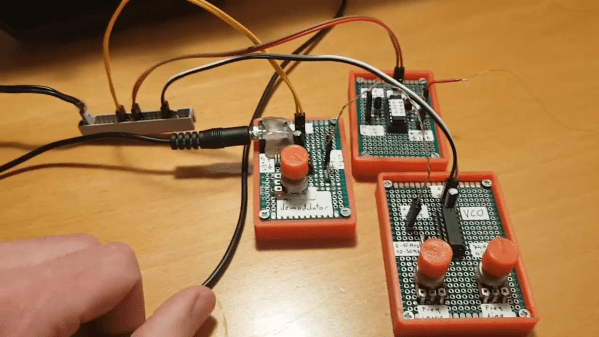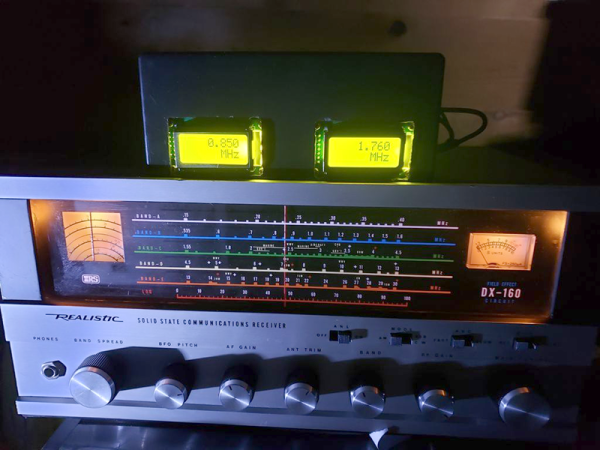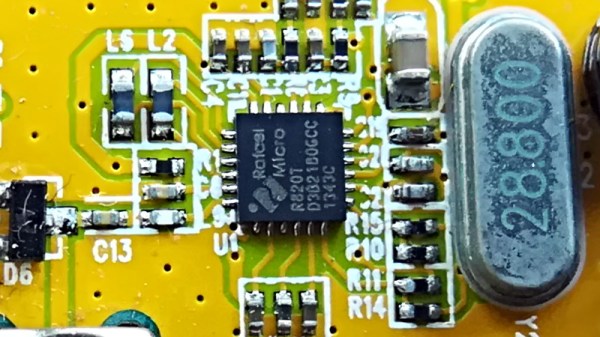An “Infinite Impedance Detector” might sound a little like something that [Zaphod Beeblebrox] would use to zip around the galaxy. It’s not, of course, but it is an interesting and useful demodulator for AM radio signals, as [Sebastian Westerhold] over at Baltic Labs explains in the brief but well-done video below.
If you’ve ever browsed through schematics of old vacuum tube radios, [Sebastian]’s JFET-based detector circuit might look strangely familiar. That’s because this demodulator is about as close to a direct translation between a vacuum tube circuit and a silicon circuit as possible. In fact, [Sebastian] even used literature from the triode version of this detector to figure out the values for some of the components. The only active component is a BF256B JFET; the rest are a small handful of resistors and caps. Construction is in the ever-popular ugly style.
The test setup is simple — a function generator set to 455 kHz and modulated with a 1,000 Hz sine wave. The detector demodulates the audio signal very cleanly, judging by the oscilloscope traces. Just for fun, [Sebastian] also tried a 10.7 MHz carrier with a 1,500 Hz audio modulation, and that worked fine too. He also tried a variation on the circuit with an IF transformer on the input. That circuit works just about the same as the transformerless version, although it does provide a little gain.
Earth-shattering stuff? Probably not. But it does show the fun you can have with a scrap of PCB and a few components, and seems like it could easily be the kind of project that would take you down the RF rabbit hole. Thanks to [Sebastian] for sharing this one with us.
Continue reading “JFET Stands In For Triode In This Infinite Impedance Detector”















